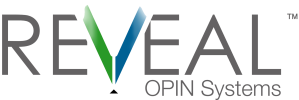
Congratulations! You’ve done it—you’ve decided to automate the distribution of important enterprise documents and reports. Now you’re ready to start the transition from old to new. Report distribution is about to become smoother, cheaper, more auditable, and more efficient.
To make your transition from manual to automated distribution successful, you need to eliminate as much ambiguity as possible. If people hate change, they hate ambiguity more.
Here are 5 actionable steps you can take to keep people informed during the switch from manual to automatic document distribution.
1. Get upper management buy-in
Once you’ve convinced yourself to automate document distribution, you need to start convincing others. Your biggest first step is convincing upper management to give you the resources necessary to make this project successful.
Here are some of the things you’ll need:
- Budget for the software
- Time to make implementation a success
- Power users to advocate for widespread adoption
As you prepare to convince management, make sure to cover not only what the end results will be, but also how your company will get there. Customize how many nitty-gritty details you include based on the preferences of upper management. For example, if management truly only cares about end results, center your presentation around hard numbers—how much time, money, and resources the software will save your company in 1 year, 5 years, and 10 years. On the other hand, if management has seen too many software implementations fall short, focus on the specific details of how you’ll make this project succeed.
On a more personal level, talk to your manager 1-on-1 about how you can convince others in upper management that distribution automation is the way to go. Once you have your manager on your side, they can help you get buy in from others in upper management. You may even want to set the success of the report distribution software as one of your big goals for the year during your annual performance review with your manager.
You need to convince upper management to give you the resources necessary to make your project successful.
2. Find the right vendor
Depending on your company’s protocol, you’ll settle on a vendor either before or after seeking upper management buy-in.
When you’re evaluating vendors, look for those that address specific felt needs of your company.
Your most felt distribution pains will likely include the following:
- Security
- Paper waste
- Auditability
- Efficiency
- Accountability
For more in-depth information, check out our post about how to choose the right electronic document distribution software.
Look for vendors that address specific felt needs of end users and upper management.
3. Woo employees who will be using the document distribution software
Whenever you ask employees to replace their manual process with an automated one, you’ll face resistance.
End users will have a lot of questions—and they probably won’t ask you all of them.
Within document distribution, questions become personal quickly:
- “Is my job at stake?”
- “Does my manager doubt the integrity of my work?”
- “Is this because of that batch of purchase orders that our carrier lost last year that I was held responsible for?”
- “What if I can’t learn the new software quickly enough?”
- “Who do I turn to when I have questions about the new software a year from now?”
Anticipate and address these types of questions—don’t necessarily wait for users to ask them. Give them something solid to consider by giving them the same reports you presented to upper management to get their buy-in.
Upper management buy-in was necessary to get the ball rolling, but user buy-in (and eventually adoption) will determine the ultimate success or failure of your project. Dedicate just as much time to wooing users as you do to wooing upper management.
One of the best ways to win over end users is to eliminate ambiguity. It’s easy to get users to agree that an idealized automated report distribution process would be better. It’s harder to show them how exactly you’re going to get there. There’s a reason people stay put even when they know the grass is greener on the other side: ambiguity. Confronted with uncertainty of how they’ll get to the better place, most people choose to stubbornly stay put.
Your best bet for convincing end users is to create a detailed plan about how your company will guide the transition from manual to automatic document distribution.
Eliminate ambiguity to preemptively boost end user adoption.
4. Stay focused and available
Don’t let this project fall to the wayside when something else comes up. Don’t sign the contracts and get everything in order and then start stalling when it comes time to implement the new distribution software.
Your vendor should offer training for end users to improve the odds of successful user adoption. Whether the training is in person, virtual, or through a tutorial will depend on your vendor. Take advantage of this training and even attend it yourself so that you stay in the loop. Being involved from start to finish shows end users that they have an advocate in you and puts a face to the person they should contact with worries, questions, and complaints.
If you’re struggling to get user adoption in the first few months after the software installation, talk with users, your vendor, and your manager. Better yet, find someone else in your company who headed up a new software installation and find out how they achieved success. The most important thing is to keep communication lines open. Don’t isolate yourself from the help and feedback of others.
Keep communication lines with end users, your vendor, and upper management wide open.
5. Eliminate the old way
As you implement the new automated distribution, make it clear that users cannot continue to do things manually. How you do this will depend on your manual process before the switch.
The goal is to make it impossible to do things the old way. For example, say you used to print out and mail purchase orders. You might have users clear their desks of the envelopes and stamps they would use to mail the purchase orders. You might also consider restricting print permissions on purchase orders.
If you’ve chosen the right software, the old way of distributing reports will soon become second-rate compared to the new way, and users won’t even try to continue doing things manually.
Don’t forget about the report recipients. Keep them in the loop as you transition from manual to automatic distribution. Whether you’re distributing internally or externally, taking extra effort to train recipients in the new software will ensure success.
You’ll need to tell those receiving the reports that they should only accept reports delivered by the distribution software moving forward. If they do receive a purchase order in the mail, they need to know to disregard it and instead check for it on the new document distribution software.
Make it clear that users cannot continue to distribute reports manually.
What you should do next
I won’t lie to you: the transition from manual to automated report distribution can be long and complicated. But if you eliminate as much ambiguity from the process as possible, people will more readily adopt the new way of doing things. Making sure you work well with your chosen vendor is also a big step to success.
Are you in the process of switching from mailing or emailing your reports to distributing them electronically? Check out the free guide below for a detailed plan that will help you woo end users while eliminating ambiguity.
Free guide: How to woo end users and successfully transition from manual to automatic report distribution
